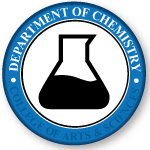Document Type
Article
Publication Date
2018
Publication Title
Chemical Research in Toxicology
First Page
A
Last Page
G
Abstract
Bisphenol A (BPA) has received considerable attention as an endocrine disrupting chemical and a possible substrate for genotoxic metabolites. BPA metabolism leads to formation of electrophilic o-quinones cable of binding to DNA and other endogenous nucleophiles. We have structurally identified the products resulting from the reaction of bisphenol A-3,4-quinone (BPAQ) with N-acetylcysteine (NAC) and glutathione (GSH). The major and minor isomers are both the result of 1,6-conjugate addition and are produced almost instantly in high yield. Reactions using 1.3 equiv of GSH showed the presence of a bis-glutathionyl adduct which was not observed using higher GSH concentration relative to BPAQ. NAC reactions with BPAQ showed no bis-N-acetylcysteinyl adducts. Stopped-flow kinetic analysis reveals the 1,6-conjugate additions to be reversible with a forward free energy of activation of 9.2 and 7.8 kcal/mol for the NAC and GSH reactions, respectively. The bimolecular forward rate constant at 19.4 °C was approximately three time faster for GSH compared to NAC, 1547 vs 496 M−1 s−1. The free energy of activation for the reverse reactions were similar, 11.7 and 11.2 kcal/mol for NAC and GSH, respectively. We plan to use this model system to further explore the mechanism of adduct formation between sulfur nucleophiles and o-quinones and the resulting chemical properties of both NAC and GSH adducts.
Recommended Citation
Structural Identification and Kinetic Analysis of the in Vitro Products Formed by Reaction of Bisphenol A-3,4-quinone with N-Acetylcysteine and Glutathione Douglas E. Stack, John A. Conrad, and Bejan Mahmud Chemical Research in Toxicology Article ASAP DOI: 10.1021/acs.chemrestox.7b00239
Funded by the University of Nebraska at Omaha Open Access Fund


Comments
© 2018 Stack, Conrad and Mahmud. This is an open access article published under a Creative Commons Attribution (CC-BY) License, which permits unrestricted use, distribution and reproduction in any medium, provided the author and source are cited.